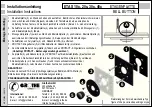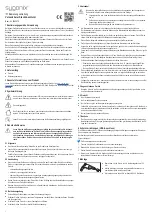
1. Beacon interval
: Beacons are packets sent by a wireless router to synchronize
wireless devices.
2. Transmit Power
: Normally the wireless transmission power operates at 100% out
power specification of this device. You can lower down the power ratio to prevent
transmissions from reaching beyond your corporate/home office or designated
wireless area.
3. RTS Threshold:
If an excessive number of wireless packet collision occurred, the
wireless performance will be affected. It can be improved by adjusting the
RTS/CTS (Request to Send/Clear to Send) threshold value.
4. Fragmentation
: Wireless frames can be divided into smaller units (fragments) to
improve performance in the presence of RF interference and at the limits of RF
coverage.
5. DTIM interval
: A DTIM is a countdown informing clients of the next window for
listening to broadcast and multicast messages. When the wireless router has
buffered broadcast or multicast messages for associated clients, it sends the next
DTIM with a DTIM Interval value.
6. WMM Capable:
WMM can help control latency and jitter when transmitting
multimedia content over a wireless connection.
7. WLAN Partition:
You can check the WLAN Partition function to separate the
wireless clients associated to the same VAP. The
wireless clients can’t
communicate each other, but they can access the internet and other Ethernet LAN
devices















































